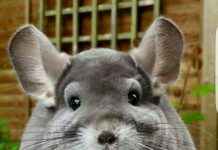Choosing a dog, potential owners focus solely on their needs, taste and financial capabilities. Someone loves pocket dogs, and someone likes massive and strong breeds, for example, wolfhounds. What is a wolfhound dog, and which breeds fall under this definition?
Material Content:
What breeds of dogs belong to wolfhounds
What animals are called wolfhounds? Many people are sure that this is the name of dogs that can destroy the wolf with their mass. It is believed that these are mainly shepherd dogs, designed to protect the herd from predators. And some do, speaking of the wolf-dog, imagine watchdogs of Asian breeds.
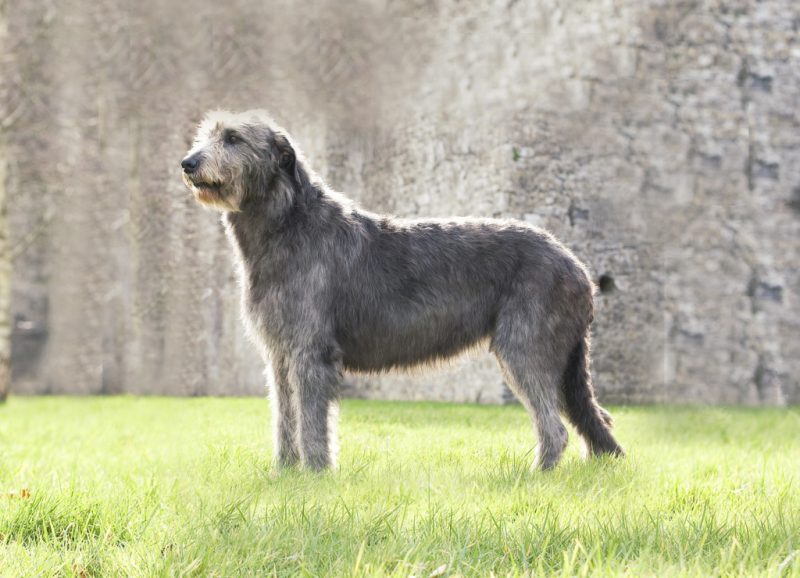
Where is the truth? In this matter, it is somewhere in between. Wolfhound is a combination concept that combines the name of several dog breeds. All of them are united by impressive dimensions, endurance, strength and, of course, independence.
Several representatives of the canine family are suitable for the description of the wolfhound:
- Irish Wolfhound;
- Central Asian Shepherd Dog (Wolfhound Turkmen);
- Caucasian Shepherd Dog (Caucasian Wolfhound);
- Russian canine greyhound (Russian wolfhound).
- Buryat-Mongolian Wolfhound.
Note. This list includes four-legged breeds, most often called wolfhounds. This list can be replenished by various representatives of guard breeds or dogs that were once used to protect livestock from wolves (Pyrenean Mountain Dog, Giant Schnauzer, Armenian gamper, etc.).
Origin history
Of course, the representatives of these breeds, in addition to similarities, also have differences. The standards of such animals were formed at different times in different parts of the world. The history of their origin, of course, also varies.
Irish Wolfhound.
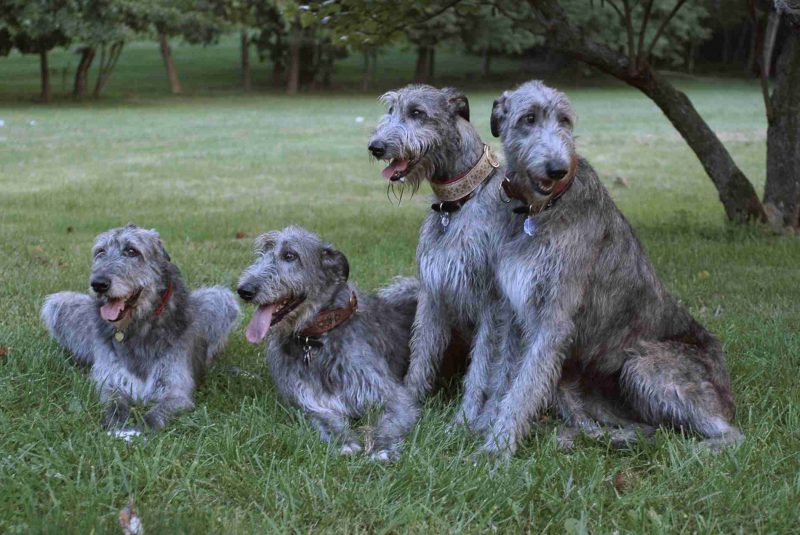
It is assumed that the ancestors of wolfhounds from Ireland are considered massive dogs that served the local Celts for protection and hunting. The appearance of modern dogs was formed in the Middle Ages. In a certain period in the territory of Ireland they engaged in the brutal extermination of wolves. It is believed that the last gray predator in this area was destroyed in 1786 with the help of local large dogs. Subsequently, the executive wolfhounds were out of work. The breed was threatened with extinction. It was only the intervention of enthusiasts who made dogs excellent companions saved large animals.
Buryat-Mongol wolfhound.
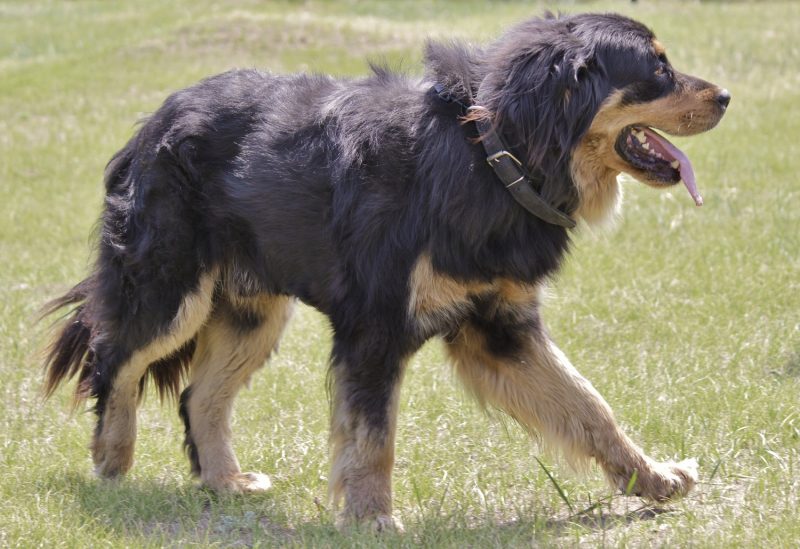
Representatives of this breed proudly bear the status of descendants of the most ancient dogs. Excavations near Ulan-Ude made it possible to discover the remains of dogs, which were later compared by scientists with the parameters of modern Buryat-Mongol wolfhounds. The resemblance was overwhelming. The breed standard in the Russian Federation was formed in 2006.
Caucasian shepherd dogs.
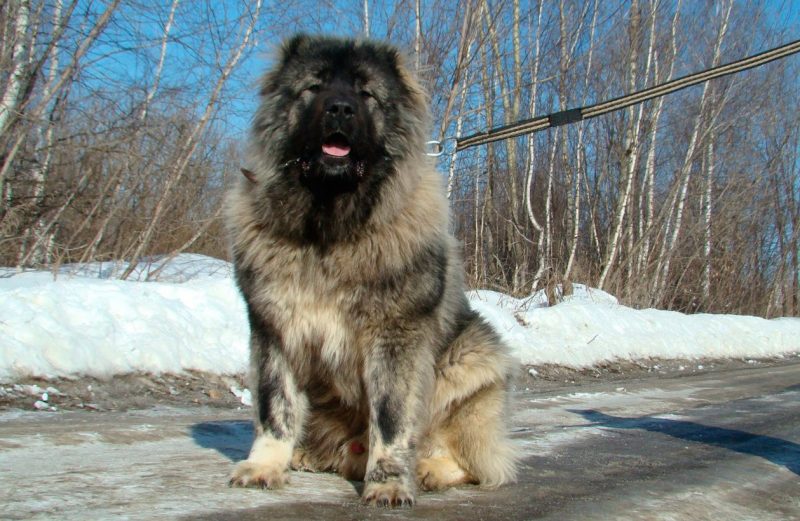
Direct descendants of the so-called Molossian dogs (a breed that gave the world dog and shepherd dogs). At home, they have long been used as cattle defenders against predators. Selection over Caucasian aborigines began in the 20s of the last century and aimed to strengthen the best qualities of Caucasian wolfhounds. In 1931, the breed standard was formed, and the dogs first performed at a German exhibition. And although the breed aroused interest in itself, it was practically not involved in its development. The official registration of the Caucasian Shepherd Dogs was made only in 1990.
Central Asian Wolfhound (Alabai).
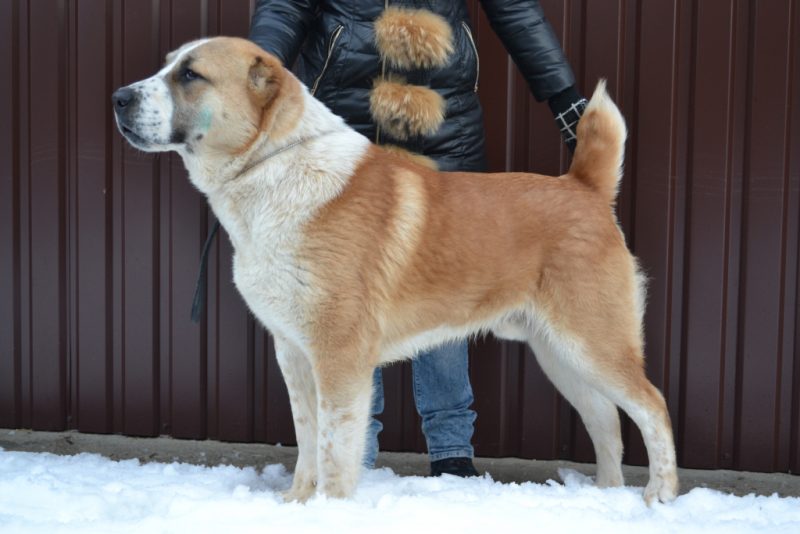
Like the Caucasian Shepherd, it comes from Molossoid dogs. Presumably their ancestors were Tibetan mastiffs and aggressive Mesopotamian dogs. This breed of dogs for all the time of its existence was subjected to the most stringent natural selection. Residents of Turkmenistan call the representatives of this breed Turkmen wolfhounds and consider them a national treasure. Breeding began in about 30 years of the last century. So, they tried to use dogs to protect state facilities. The set task failed due to the difficulties of the psychology of dogs. In 1990, the breed standard was approved in Turkmenistan. Later, in 1993, an international organization of dog handlers took it as the basis for an international club of dog handlers who called these animals Central Asian Shepherds.
Russian canine greyhound.
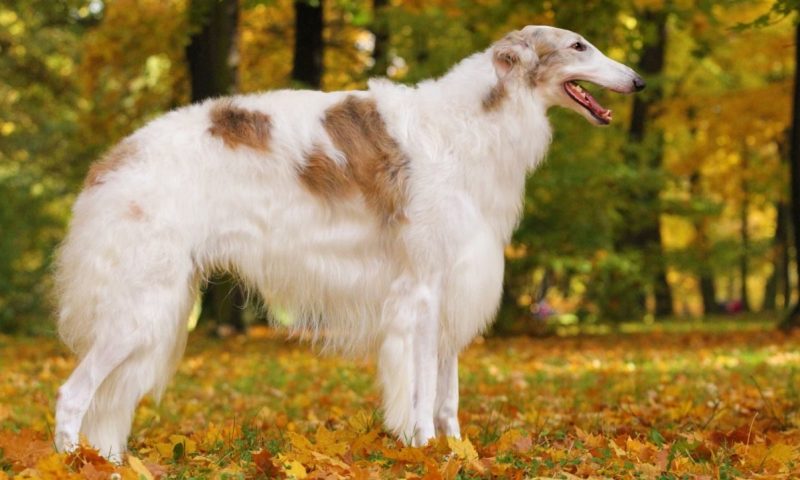
For the first time, Russian greyhounds were mentioned in documentary sources of the 17th century. Prior to this period, all greyhounds were called Circassian. Since the 18th century, the blood of European greyhounds has joined them, and starting from the 20th, Crimean and mountain. The formation of the breed occurred in 1888.
Note. Russian greyhound - the only representatives of his family, awarded the title of wolfhound. Although greyhounds really hunt wolves (and very successfully), the definition of a wolfhound does not quite correspond to them because of the peculiarities of the body structure, different from massive wolfhounds.
Purpose and character of dogs
The main tasks of wolfhounds are hunting and protection. Some breeds do an excellent job with both tasks at once.
Irish Wolfhound.

It is considered the most typical, classic wolfhound. The dimensions of this magnificent animal are truly amazing. But, despite their fierce appearance in some places, the Irish are very peaceful and good-natured and are unlikely to go into conflict because of the lack of aggression in their character. It's funny, but these large dogs would rather adore and lick family members than guard, since they were initially bred as hunters. Wolfhounds are restrained, have a balanced psyche, are strongly attached to the owner.But we should not assume that this feeling deprives them of the ability to think and make independent decisions - Irish wolfhounds are quite strong-willed and self-sufficient dogs.
Buryat-Mongol wolfhound.
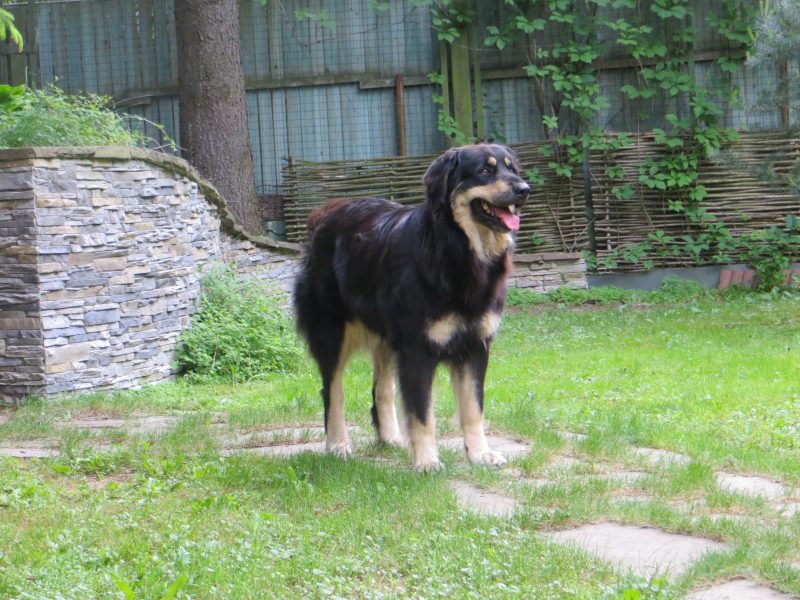
The alternative name is “khotoshonokha”. As you can guess from the name, most often they can be found in Mongolia, Buryatia and the surrounding areas. These dogs are unpretentious and, more importantly, universal in terms of their application. Good health and powerful dimensions allow them to perform different types of work.
It is interesting. “Hotosho” literally means “yard dog” or “yard wolf”. It is easy to guess that such dogs are great for home security.
This species of wolfhounds has a balanced character, they are completely loyal to their owner. The wonderful abilities of the guards and the friendly attitude to family members make them in demand and popular.
Caucasian Shepherd Dog.
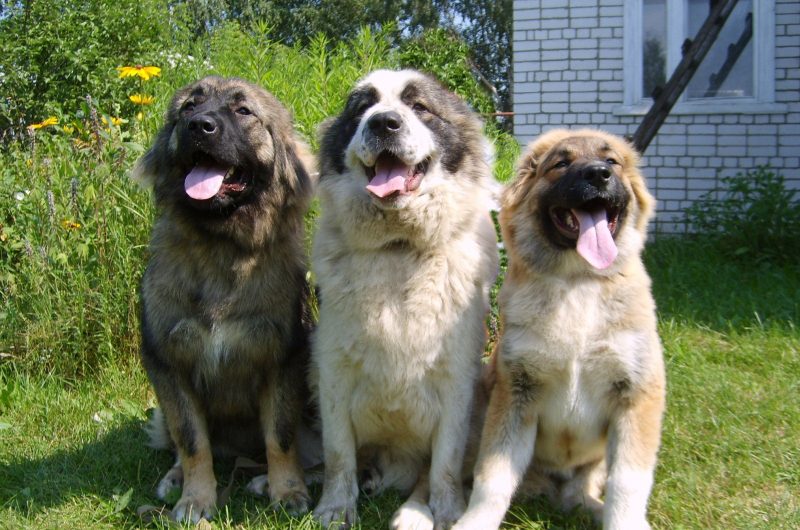
Unlike their European counterparts, Caucasians have never been engaged in exclusively shepherd service, only occasionally helping to overtake herds. Their main task was to protect domestic animals from predators. And although the nature of the Caucasians is stubborn and rebellious, protecting its owner, the dog can sacrifice its own life. Representatives of the breed are not easy to maintain and raise, therefore, only experienced dog breeders should take up the matter.
Central asian shepherd dog.

Ideal for security service. Dogs are distinguished by a brave, fearless, proud and independent disposition. And although they do not express their feelings too clearly, they are usually attached to the family and do everything for their full protection. Get along well with other pets, protecting them.
Russian canine greyhound.
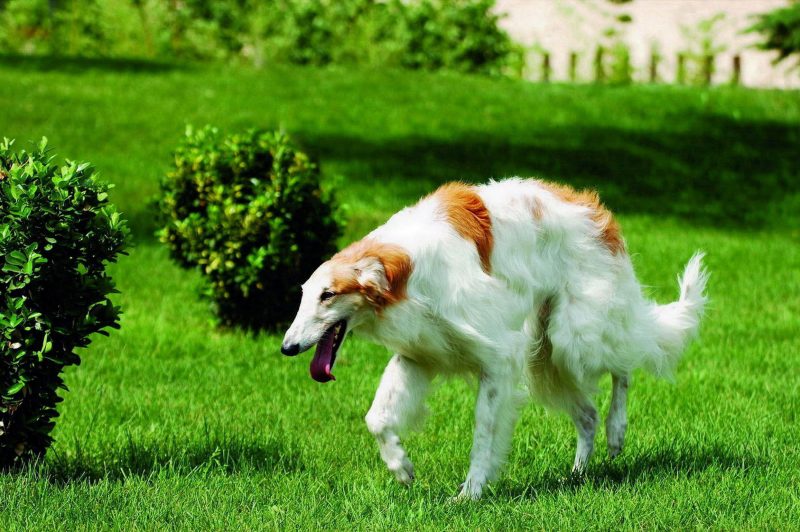
Great representatives of hunting dogs: fast, with remarkable strength, excellent eyesight and stamina. Such dogs are quite aggressive towards other animals. This should be considered when deciding to start a greyhound. In general, dogs known for their complex temper - being calm and restrained, they can immediately change their mood when they see potential prey. Animals are self-sufficient, if not independent, because they can very well live without a person and at the same time not remain hungry. But, noble greyhounds with a degree of condescension put themselves at the disposal of family members and accept the rules proposed by him.
It is interesting. Dogs of Russian greyhounds are called because of the magnificent wool. In Old Russian, the word "dog" had the meaning of silky, wavy and soft wool.
Wolfhound breed standard
Despite the divergence of their functionality and breeding sites, wolfhounds have one thing in common - this is, without a doubt, a massive impressive appearance (the exception is the lean and slender Russian greyhounds).
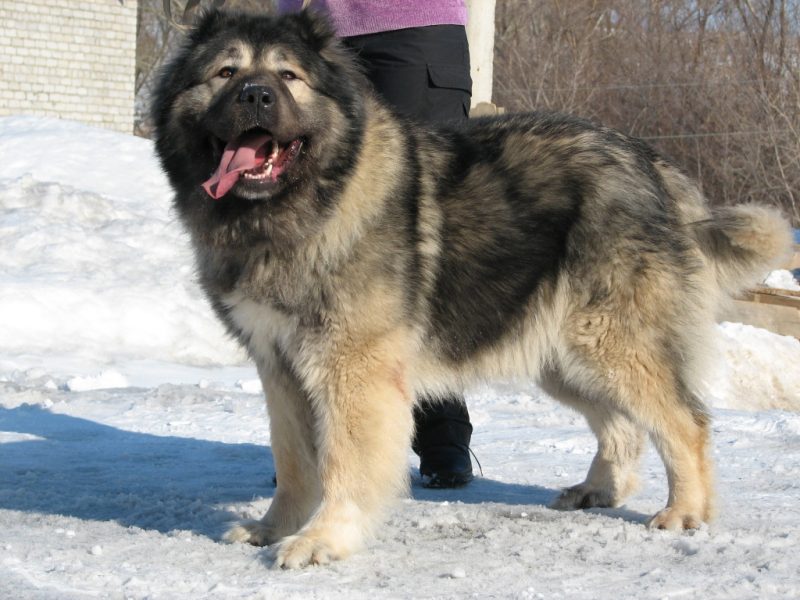
The magnificent wolfhounds have a large elongated head with a wide forehead. The mouth of the animals is deep, the look is strong-willed, intelligent, insightful. The chewing muscles are striking in their strength, the teeth are well developed, smooth and white. With regards to the bite - it can be either straight or scissor-like. Ears, depending on the breed, can be erect, hanging or even cropped (Central Asian Shepherd). The neck of the wolfhounds is quite long, wide and muscular - it is this part of the body that gives a majestic look. The chest is lowered, rather wide and developed. In the lumbar region there is a slight rise, the pelvis is powerful and wide. The limbs of wolfhounds are long, strong and proportional. The tail is moderately long and thick, has the shape of a saber. As for colors, representatives of this dog group can be beige, light, fawn, black, brindle, and so on.
Keeping and caring for a dog
Keeping a large dog can be troublesome. This is especially true for feeding - animals need large portions.Wolfhounds should not be kept in a person’s home, be it a house or an apartment. Yes, and the booth does not fit. The ideal solution is to build a special cabin with an aviary, clean and spacious.
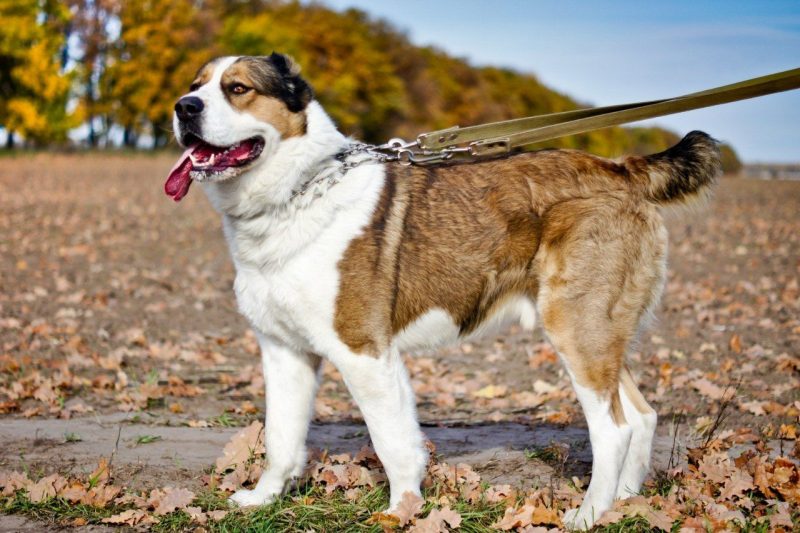
You should carefully consider the condition of the pet's coat, which must be combed periodically.
As for feeding, puppies are considered more voracious, of course, than adults. They can even consciously limit themselves in food. Food should be full, balanced and varied. If preference is given to natural food, then products for the wolfhound should be saturated with minerals and vitamins (fruits, vegetables, fish, meat, cereals, etc.).

Tip. You should not systematically treat wolfhounds with high-calorie dishes. Otherwise, the animal will have to be planted on fasting days.
Also, in the immediate vicinity of the wolfhound, clean water should always be present.
The animal must be regularly treated for insects, parasites and bacteria. Do not forget about the condition of the eyes, claws and ears. Wolfhounds are bathed as they become dirty, but no more than 2-3 times a year.

Tip. If the decision has matured to settle the wolfhound in the apartment, it should be noted that you need to walk with him several times a day. Often ideal are frequent attacks on nature, where the animal can run freely without a leash.
How to train and educate
It is difficult to imagine a wolfhound without appropriate training. These dogs must undergo a general training course, and some breeds should also work on the issue of host leadership. The subtleties of raising animals depend on the purpose of the dogs (guard, shepherd, etc.).
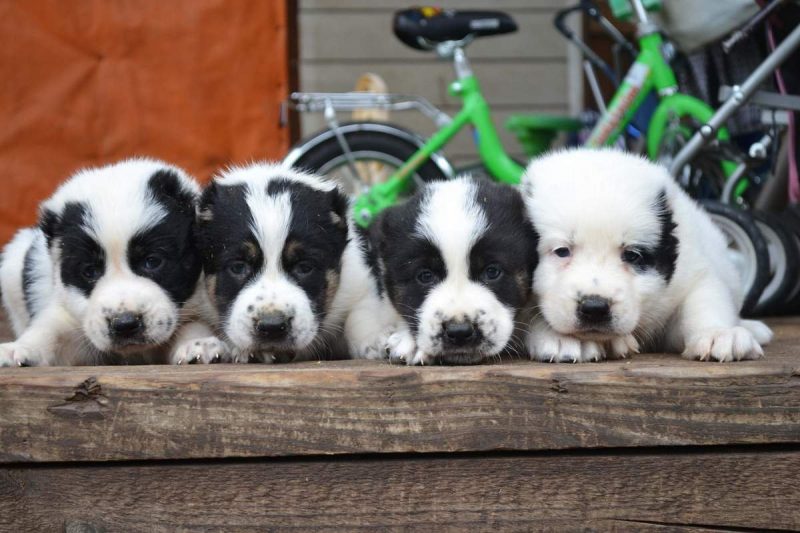
From the very tender age, the puppy must be aware of how to behave. It is in childhood that the wolfhound baby should be taught basic commands and taught obedience to the master.
In the process of training and education of a wolfhound, one should adhere to some principles:
- Slowness. These are not decorative creatures, wolfhounds were created to work. For this reason, before executing a command, he must consider and accept it. Dogs understand everything perfectly, so if for some reason the wolfhound refused to execute the command, you should not scold him. Most likely, the owner’s behavior has been chosen incorrectly, and the pet is trying to inform him about it.
- Respect. Talk with dogs firmly, loudly and calmly. Do not shout, wave your arms and beat the dog. Wolfhound can be seriously offended by this behavior.
- Force. The owner of dogs of this type should get rid of fussiness, excessive sensitivity and timidity. The pet can instantly perceive such behavior as weakness and subsequently it will be difficult for the owner to instill in him his strength and superiority.
Pros and cons of the breed
Before you get a wolfhound as a pet, you should weigh the main pros and cons of choice.

Advantages of the breed:
- Impressive size and excellent security. It is enough for a wolfhound to just walk next to the owner to inspire others with fear and awe. Even a walk in the evening park is not scary with this companion.
- Discipline. Large dogs are well aware of their place.
- Health: A purebred animal is rarely susceptible to disease.
- Unpretentiousness. Especially when it comes to food. Most of these dogs were raised as workers. Being on pastures for a long time and being content with a poor diet, the ancestors of modern wolfhounds passed this gastronomic modesty to their descendants.
- Character. The impressive size does not prevent wolfhounds to have a wonderful character and even some phlegm. They usually get along well with children and other pets.
Attention! The described advantages are typical exclusively for raised animals. If the owner, due to laziness or other reasons, was not involved in raising a pet, it will be very difficult to get along with an adult wolfhound.
Actually, for the above reason, there are disadvantages of keeping large dogs - if they are not brought up properly.
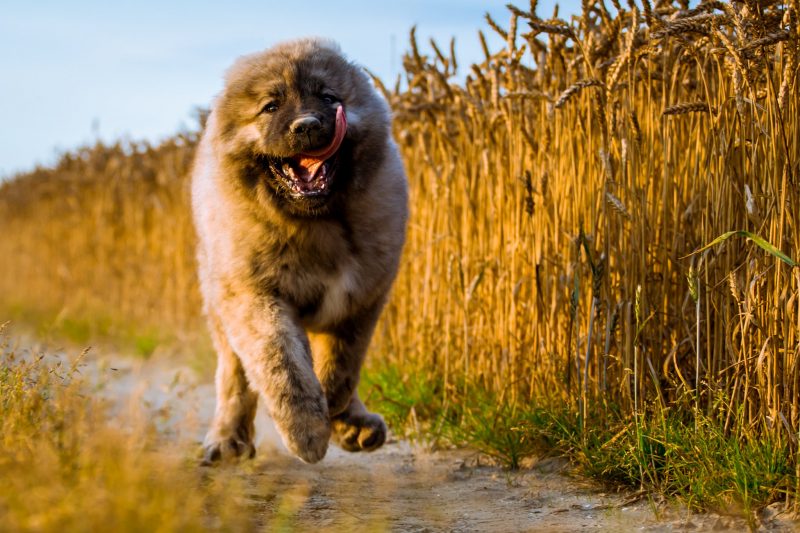
Additional disadvantages of the breed include:
- Gluttony of a pet at an early age.
- For owners living in an apartment, keeping a wolfhound can be difficult - babies up to 3 months are not recommended to go down the stairs to avoid improper reinforcement of their paws.
- Mandatory walks. Wolfhounds do not belong to animals, imposingly lying all day on the couch. These active dogs need to constantly pour out strength and energy. The owner should be ready for regular walks in any weather.
Wolfhounds - a collective image that has collected at least 5 breeds of large dogs. A distinctive feature of animals is strength, large size, high intelligence and devotion to the owner. Keeping dogs has its positive and negative sides, which, of course, should be taken into account when planning to get animals as pets.






